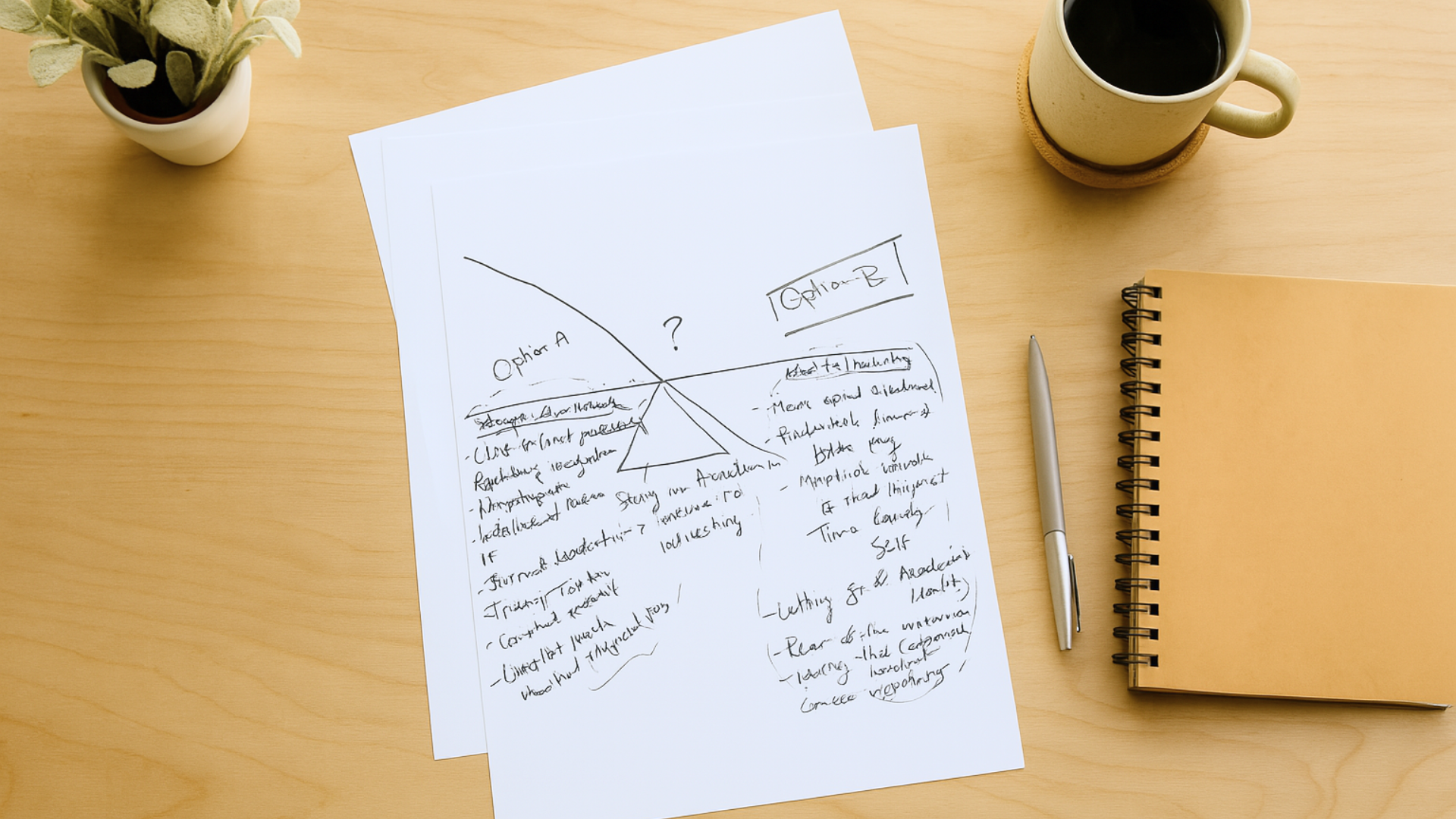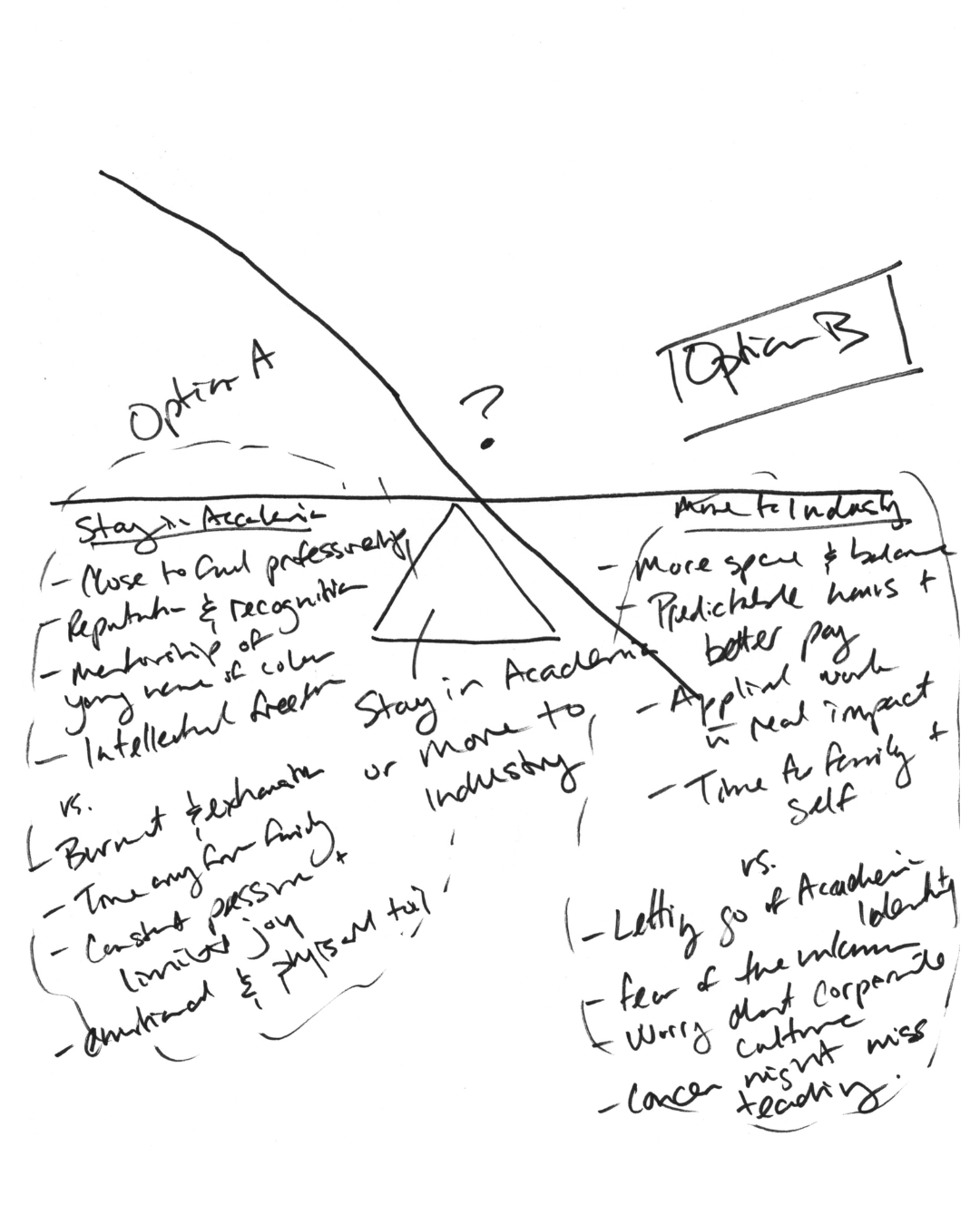How the Seesaw Drawing Tool Helped Clarify a Career Choice

“I’m starting to see that maybe I’ve already outgrown the title.”
That was the moment something shifted for Amina. Not because she finally had the “right” answer, but because she finally gave herself space to ask the real question: What do I actually want my life to feel like?
Amina is a pharmaceutical chemist. Brilliant, respected, and 15 years into a successful academic career. She’s published, tenured, and just one step away from full professorship. On paper, her path looks linear. Impressive. Unshakable.
But in our coaching session, something else came forward.
She was exhausted.
Between grant deadlines, committee meetings, and the invisible load of being a mentor to so many young women of colour in STEM, Amina found herself in a quiet kind of burnout. Not the dramatic kind you can’t ignore—but the slow, steady depletion that makes you feel like you're always a little bit underwater.
She didn’t want to quit. She didn’t want to stay. She was stuck in between.
That’s when I introduced her to a visual tool I often use with clients facing this kind of internal tug-of-war. It’s called the Seesaw.

What Is the Seesaw?
The Seesaw is a simple drawing tool that helps externalize a difficult decision—especially when both options feel heavy in different ways. It’s not about choosing immediately. It’s about slowing the mental spin and making space to see, feel, and reflect.
Here’s how it works:
You start with a triangle at the bottom of the page—this represents the foundation. Across the top, you draw a horizontal line: the seesaw beam. Each end of the beam holds one option. You label the options, list the arguments for and against each, and then reflect on which “tips the balance.” You can literally tilt the beam to show where your energy is leaning.
It’s surprisingly powerful for something so simple.
The Coaching Session: Amina’s Seesaw
We began by naming the core decision: Stay in academia or move to industry? But Amina quickly realized that wasn’t the heart of it.
She titled her seesaw: “Who am I without the title?”
On one side, she listed everything academia had given her: recognition, mentorship, intellectual freedom, legacy. It was the world she’d built her identity around.
But on the other side, she wrote something she hadn’t said out loud before.
“I want to breathe again.”
Industry represented something less prestigious, but more freeing. Better hours. More space to be a parent. The chance to focus on applied science and come home with energy left to give.
As she talked through both sides, I asked her to reflect: What feels heavier—not in a burdensome way, but in a meaningful way?
She paused.
Then she said, “The part of me that wants to feel alive again. That part is heavier. And I’m finally listening.”
That’s when she tilted the beam of the seesaw. Quietly, but with certainty.
Why Drawing Helps
We live in our heads. Especially in STEM, where logic, structure, and rational thought are rewarded, it’s easy to stay in the realm of analysis. We make pros-and-cons lists. We optimize. We try to think our way to certainty.
But some decisions are not logical puzzles—they’re emotional landscapes.
Drawing slows the brain down. It creates just enough distance from the thoughts to see them clearly. And it turns abstract fears and assumptions into something tangible—something you can look at, sit with, and reframe.
Here’s what makes tools like the Seesaw especially useful for women navigating burnout or transition:
- It bypasses overwhelm. Instead of listing a thousand things in your head, you’re just drawing a triangle and two columns.
- It respects complexity. You don’t have to declare one option “bad.” Both sides can be valid, difficult, and real.
- It creates emotional safety. There’s no pressure to decide right away. The drawing holds the tension so you don’t have to.
- It encourages body-based wisdom. Seeing the options on paper helps you feel into the decision, not just think through it.
There’s also neuroscience behind this. When we engage in simple visual tasks—like sketching or labelling—we activate both hemispheres of the brain, including areas related to emotional regulation, decision-making, and spatial processing. This integration can lead to more grounded insight and less reactive thinking.
Letting Go of the Title
What struck me most in Amina’s session wasn’t the decision she leaned toward—it was the grief she allowed herself to name.
Letting go of academia, for her, wasn’t just a career shift. It was a shedding of identity. A stepping away from years of striving for a role that once meant everything.
And yet, when she said, “I think I’ve already outgrown it,” you could feel her body soften.
The clarity didn’t come from pushing harder. It came from making space to see clearly.
That’s what visual coaching tools like the Seesaw can offer. Not an answer, but a container. A pause. A moment where it’s okay not to know—and a quiet invitation to trust what shows up when you look at the page.
Try It Yourself
If you're sitting with a decision—big or small—I invite you to try the Seesaw. You don’t need anything fancy. Just a blank page and a few minutes of quiet.
Draw the triangle. Label the beam. Name your options. Weigh them slowly. And if you’re ready, tilt the line toward where your energy wants to go.
You might be surprised at what shows up.
Feeling pulled in two directions?
If you're sitting with a big decision and want a quiet space to explore what’s next, I offer free 30-minute Clarity Calls.
It’s a chance to talk things through, no pressure—just space to think out loud and see what feels right.